Tank Floor Inspection using Guided Wave
Context
Nucleom is performing out and in service inspection of petrochemical storage tank following API codes. During this inspection, our team evaluates the integrity of the tank and gives a detailed report including many sections such as Ultrasonic Testing (UT), Visual Testing (VT), settlements and many more. Each 5 years, routine In-Service Inspections (ISI) are performed from the outside of the tank while the product is kept inside. For this reason, the floor, which is one of the major components, cannot be evaluated. However, Out-of-Service Inspections (OOSI) are conducted every 10 years when the tank interior is completely cleaned to help facilitate the inspection of the tank’s internal components and structure. During this heavy process, the floor becomes accessible and Nucleom performs Magnetic Flux Leakage (MFL) inspection to detect and measure corrosion patches hidden under the floor. Based on this technic, Phase Array Ultrasonic Testing (PAUT) proof ups are made to size accurately the minimum remaining thickness. Finally, our team provides recommendations on the number of repairs to extend the remaining life of the floor for 5, 10 and 15 years scenarios. These recommendations are valid if the tank conditions remain unchanged and the corrosion rate is constant. However, no further observation can be made until the next OOSI. To fill that gap, robotic inspection can be performed by diving a submerged robot. In this context, Nucleom began a project in 2018 to evaluate tank floors from the outside using Guided Wave (GW). This research work was funded the MITACS and conducted in collaboration with the PulETS laboratory from ETS Montreal under the supervision of Professor Pierre Bélanger.
Guided Wave in NDE

The first part of this project was to evaluate the feasibility of GW technology as a screening tool for the inspection of tank floors. GW are low frequency ultrasounds (lower than 1 MHz and higher than 20 kHz). Unlike bulk waves, commonly used for UT or PAUT, this method of testing propagates waves within a wave guide. These waves can generate different modes: asymmetrical (A), symmetrical (S), and Shear Horizontal (SH).
Several tools already exist on the market and are already used by Nucleom:
Guided Wave Testing (GWT)
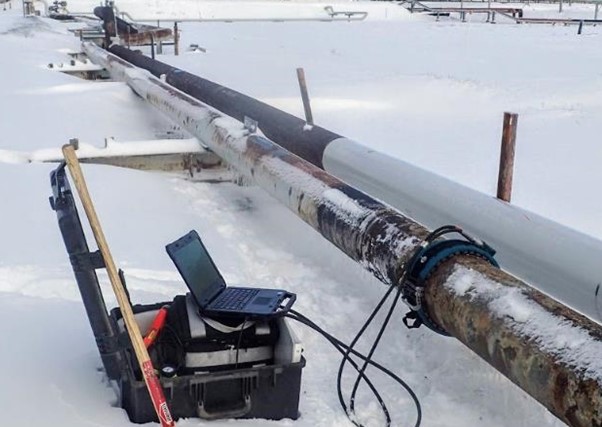
GWT is used by Nucleom for fast screening of pipes. It allows to detect corrosion patches from one location up to 50 meters in each direction.
The result is displayed as an A-Scan. Like conventional UT, GWT calibration is done after the acquisition by applying a Delay Amplitude Curve (DAC) using weld echoes as reference. This calibration requires that all welds be similar. This is normally the case and their amplitude is usually of 22.5%.
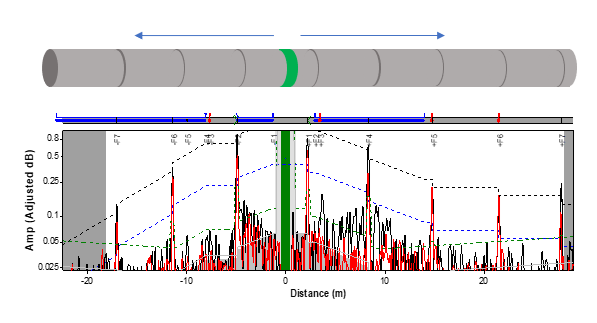
GWT is a very fast and efficient way to scan long distances of pipes and to identify the next location of interests for complementary Non-Destructive Evaluation (NDE). Therefore, a complementary tool is required to perform quantitative measurements when an indication is found. Indeed, amplitude-related GW methods can only be qualitative since the reflection generated by the defect depends on its shape and not its severity.uisition by applying a Delay Amplitude Curve (DAC) using weld echoes as reference. This calibration requires that all welds be similar. This is normally the case and their amplitude is usually of 22.5%.
Quantitative Short Range (QSR)

QSR is a GW technology that uses GW with frequencies up to 500 kHz. At this frequency, multiple modes are generated with different motions. When thickness is reduced, the wave guide geometry is changed, and some modes are reflected. In a pitch catch configuration, these modes are considered as filtered. Based on this cut-off frequency, it is then possible to measure quantitatively the minimum remaining thickness.
High Order Mode Cluster (HOMC)
This method is currently used by Nucleom to evaluate the first meter of tank floor from the outside. This technology uses high-frequency GW (up to 1 Mhz) with A0 mode. This mode can easily be generated using a piezoelectric transducer and a wedge. HOMC have the particularity to propagate in the nondispersive regime of GW which eases their interpretation because images can be reconstructed the same way as PAUT. However, this method is very limited by
- The attenuation introduced by the high frequency.
- The A mode that is an out of plane motion.
This is highly affected by surrounding liquids
Guided Wave Testing of a Tank Floor
These three technologies have demonstrated very good capabilities for the detection of corrosion patches from a distant location. The idea of the project instigated by Nucleom is to design a tool similar to GWT which would allow to inspect long distances and therefore cross the tank from side to side.
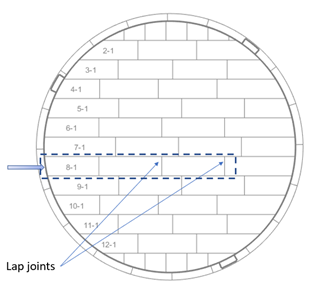
The Approach
- Perform the acquisition from the outside of the tank with a probe on the chime plate.
- Identify the orientation of the plates in the tank.
Objective: maximize the amplitude of the weld reflection. - Calibration can be performed like GWT.
Use of weld reflections as known reflectors. - Scan every row of plates.
- Perform acquisition from the other side.
To ensure a 100% coverage.
At the beginning of the project, the following constraints were identified:
- Long distances (up to 30-50m);
- Liquide in the tank;
- Lap joint welds.
The first two points are well known, and for this reason the design was rapidly oriented to a low frequency tool limit the impact of attenuation. Also, SH mode appeared as a good candidate because of its in-plane displacement that is less affected by surrounding environment than other modes. Based on this work hypothesis, the main effort was focused on the lap weld to maximize the energy transmitted from one plate to the other and minimize the impact of the geometrical attenuation from the weld.
To determine the optimal frequency and the most appropriated mode, Finite Element (FE) simulations of GW propagating into lap joint were done using POGO software.

Then, a mock-up of a tank floor was made in Nucleom lab to confirm these results.
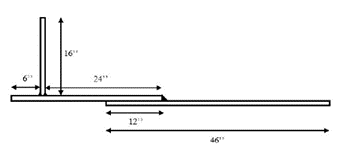
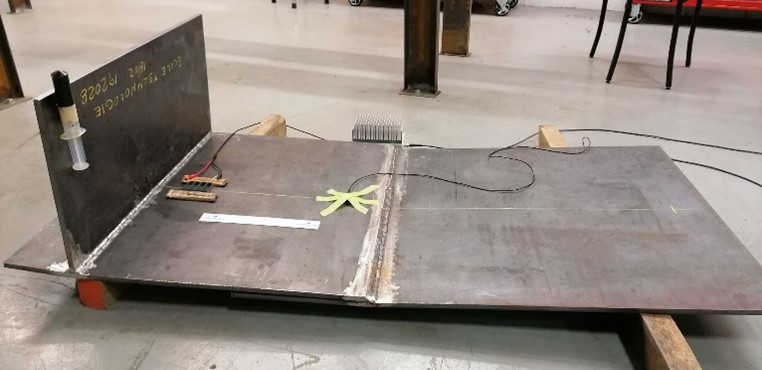
As a result, it was confirmed that SH0 is the best mode with 5 dB (almost X2) mode than S0. It was also observed that weld angle had almost no impact on the attenuation if lower than 30°.
An example of measurement made of the mock-up is shown in the next figure:

Results
- Presented at the conference: ASME QNDE conference 2020 – Propagation of Low Frequency Guided Waves Through Lap Joints by Chaboty, A., Dupont-Marilla, F. and Bélanger, P.
- Accepted in a peered reviewed scientific paper Journal of Nondestructive Evaluation volume 40 Propagation of Low Frequency Ultrasonic Guided Waves Through Welded Lap Joint by Aubin Chaboty, Frédéric Dupont-Marillia & Pierre Bélanger
Next Step for this Project
Now that the scientific part is completed, the concept been proved, and the limitations found, Nucleom is actively working on the design the first prototype of this unit. The probe design is 90% finalized and discussions are ongoing with specialized manufacturers for the acquisition setup. Also, Nucleom software department will oversee the development the user interface and the signal processing required to analyze the results. The first deployable system is expected for beginning of 2022. Nucleom aims to offer new and innovative solutions to increase the confidence of its client in their inspections.
To learn more about GUIDED WAVE (GW) & QUANTITATIVE SHORT RANGE (QSR)
Visit our CONTACT page to speak with our team.
WRITTEN BY FRÉDÉRIC DUPONT-MARILLIA
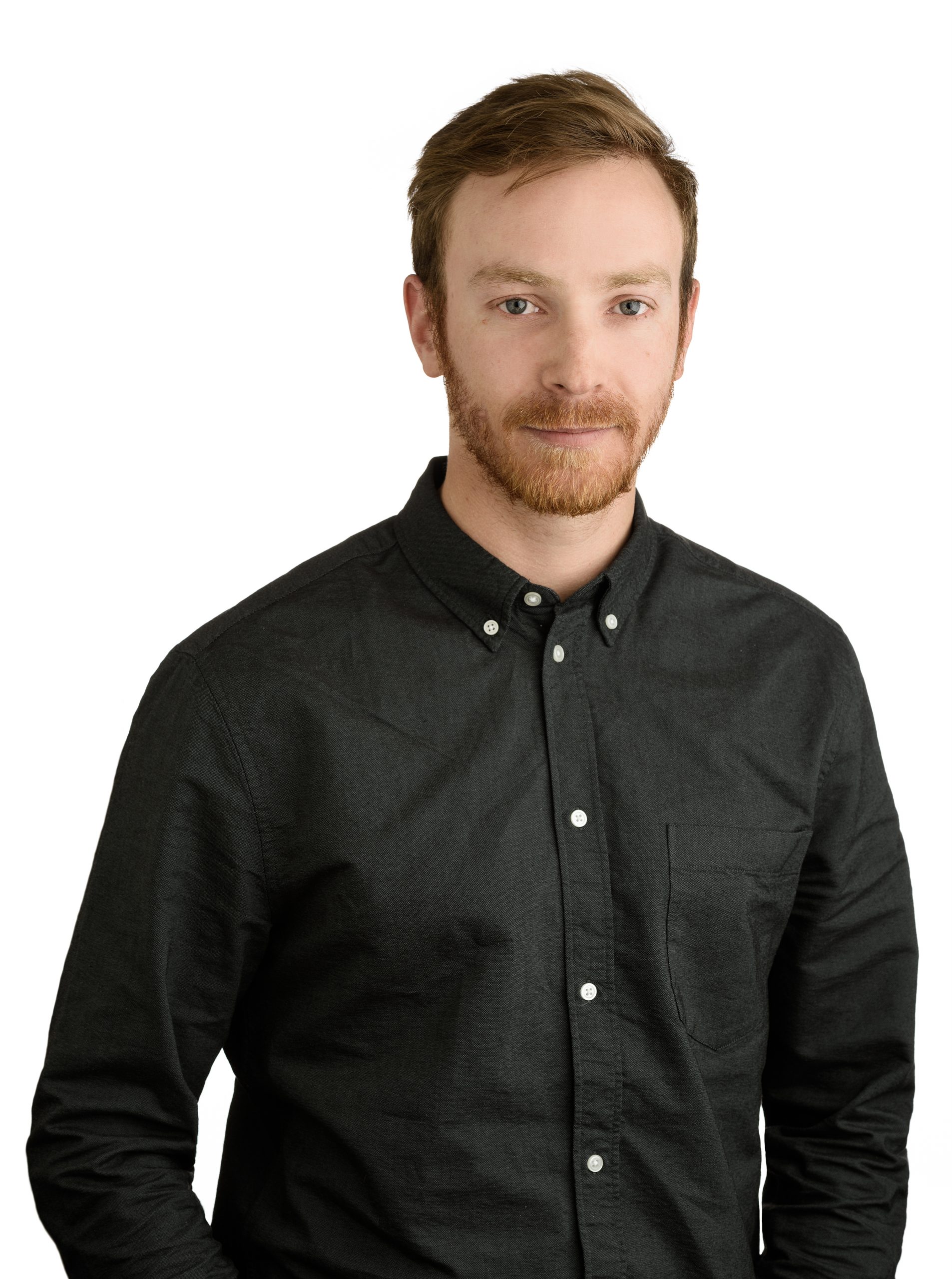
Frédéric Dupont-Marillia is a material engineer who did his Ph.D at ETS (PulETS). He is specialized in advanced applications of ultrasound imaging such as TFM, PWI and coded excitation. During his project titled “Phased array inspection of large sized forged steel blocs”, he developed a new algorithm to eliminate imaging artifacts and proposed a new method to maximize ultrasound energy in the material. Frédéric is now involved in different research projects with Nucleom and PulETS laboratory such as HTHA detection, Guided Wave inspection and more recently Artificial Intelligence. His results were presented at several conferences (rQNDE ASME scientific event) and published in peer reviewed scientific papers as well as industrial articles.
About us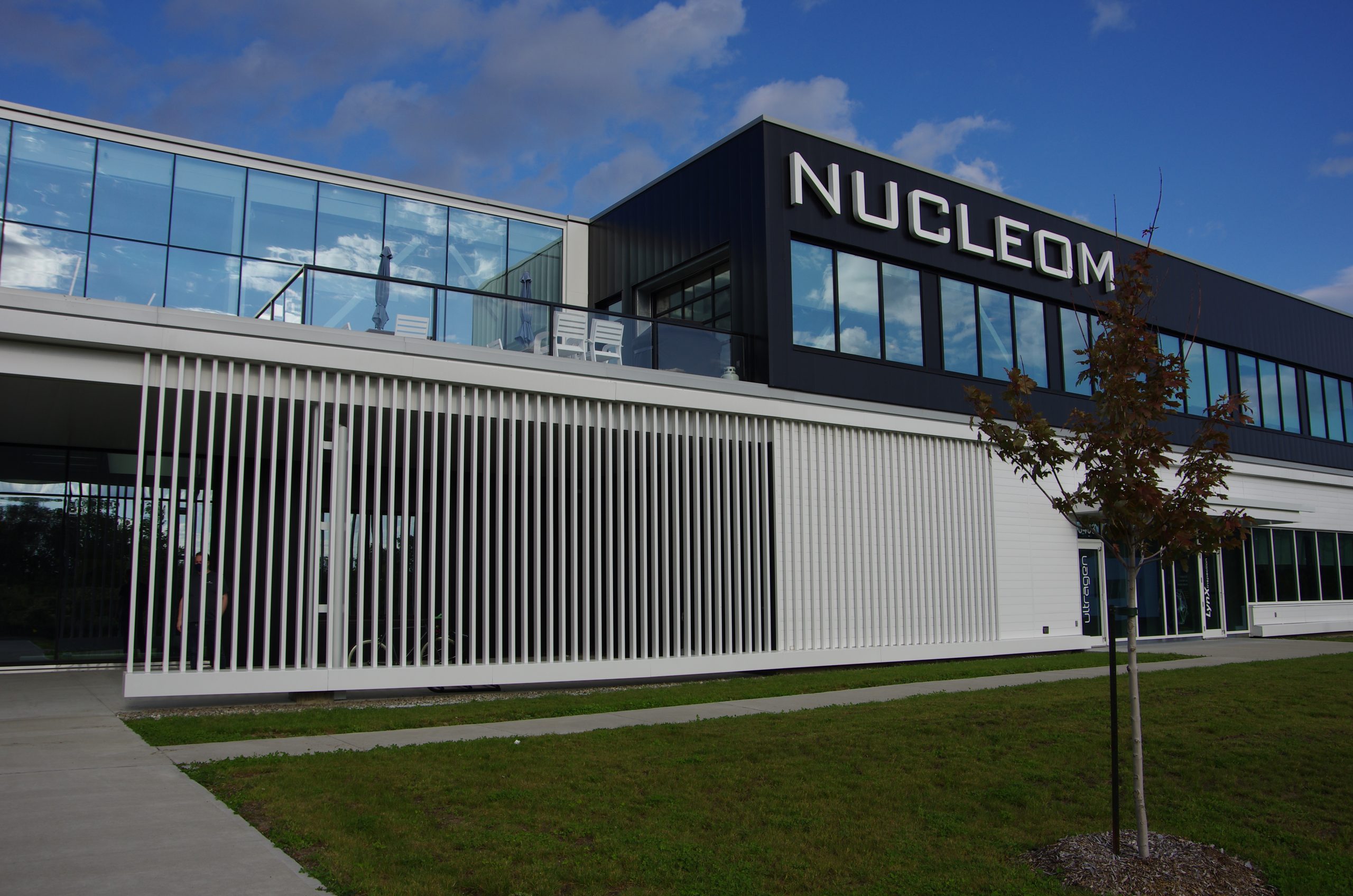
Nucleom, a Canadian NDE company founded in the province of Quebec, has been extensively involved in non-destructive examination services in Canada and internationally since 2010. A combination of site experience and NDE tool design know-how gives Nucleom an in-depth perspective of on-site challenges for the NDE system operation. Nucleom’s expertise extends into areas of NDE tool development, tool integration and site inspection campaign execution. Nucleom now has offices in Quebec (Quebec City/Montreal), Ontario (Whitby/Kincardine) and Alberta (Edmonton/Fort McMurray).
